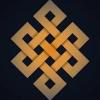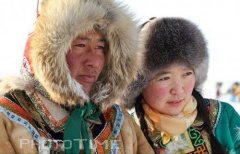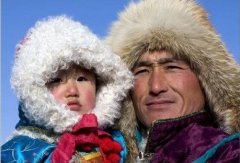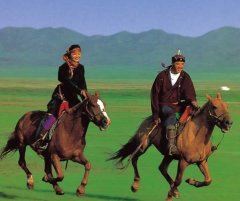-
Постов
3523 -
Зарегистрирован
-
Посещение
-
Победитель дней
9
Тип контента
Информация
Профили
Форумы
Галерея
Весь контент Hooker
-
Почему у ваших сородичей хакасов и алтайцев совсем нет войлочной юрты ? Чем это обьясняется?
-
По вашему где могут находиться потомки Хорчи ,от 30 туматских девиц? Я считаю-Найболее вероятное место нахождения-это современный Кыргызстан.
-
У них тоже классификация черные,белые и дикие? По моему черные-Крымские,Белые-московские и Дикие-это казанские.
-
http://russian.eurasianet.org/node/59088 Мои соболезнования родственникам и близким погибших.
-
Усуни были одним из Хунских племен, несли общий эндоетноним Хун, зафиксированном в китайском как "giuən" и "kiən". Это был начальным Усунским эндоетнонимом в их области в бассейне реки Ушуи (Кит. Ушуи, Тюр. "Карга", Рус. "Ворон") в Андине и Пинлиане (современный Пинлиан и Гуюан) области в Ганьсу. Позже, китайский этнический термин Уши - Ушин - Усун, означая семантически "Вороново Племя", очевидно был принят как эндоетноним, наряду с родным общим эндоетноним Кун~Хун, и традиционным племенным эндоетнонимом не названном в статье. Прото-Хунские племена в 6-4-ом вв. до н.э были к западу от района Лансиан на реке Вейхе. К северу от них, в Бейди (современный район Тсиниан) было племя Куян, которое в будующем стало династийным кланом Сюнну-Хунну, и Сянби-Самбиры. Между Шестью Гуннами и Куянами, в Андине и Пинлиане (современный Пинлиан и Гуюан), были Ушины, то есть Усуни. Усун - Ашина (Ошин) тамга имела ворона. Усуньская легенда происхождения включала Ворона как тотем. http://s155239215.onlinehome.us/turkic/29Huns/Usuns/ZuevHunsandUsunsRu.htm
-
Этот человек очень похож на китайца.
-
Ирж буй шинэ оны баярын мэнд хvргэе. Хууранд хөг, Хайранд итгэл, Хурмастад нар, Хүмүүнд амжилт хэрэгтэй. Шинэ жилийн мэнд хүргэе !
-
В противном случае сегодня халхи назывались бы не монголоми,а именно ойратами.
-
Они оставили Хорчи ноиона одного в лесу и пошли походом на нынешнюю территорию что ли ? Есть русское слово Лач УГА. А как будет " Чум" на тюркском? Как тувинцы и хакасы и ойроты называют свою конусообразную деревянную юрту? Среди крымских татар также множество лесных племён с барынами. Вы считаете халхасских барынов "фальшивыми"?
-
Вы хотите сказать о том ,что ваши Керей,Найманы,Меркиты.Аргыны,Коныраты,Кыргызы-изначально были лесными народами? Все правильно.В тюркском слово журт, иурт означает не юрту, а чум деревенного. Это тоже потверждает их лесное происхождение.
-
§ 241. Тут же, у Ботохой-Толстой, в плену у Туматов находились и Хорчи-нойон с Худуха-беки. Пленение же Хорчи произбшло при следующих обстоятельствах. Чингис-хан разрешил ему взять себо в жены тридцать самых красивых Туматских девушек. Он и поехал за Туматскими девушками. Тогда покорившиеся было перед тем Туматы восстали и захватили нойона Хорчи в плен. Узнав о пленении Хорчи, Чннгис-хан послал к Туматам Худуху, как хорошего знатока Лесных народов. Но и Худуха-беки был также схвачен. Замирив окончательно Туматский народ, Дорбо отдал сотню Туматов семейству Борохула в возмещение за смерть его. Хорчи набрал себе тридцать девиц,
-
Хааны гэр тэрэг Монгольская юрта с деревянным полом(Модон шалтай Гэр) Монгольская юрта без деревянного пола(Шалгүй Гэр)
-
Сибирские скифы Все на том же Манхае Владимир Свинин нашел следы и более древней цивилизации. Им была организована археологическая экспедиция, в ходе которой ученые вскрыли одну из плиточных могил, расположен- ных на Манхае. По некоторым ее особенностям — в частности, по расположению останков головой на восток — было определено время захоронения: VII—VI век до нашей эры. Подобных могил много в Монголии, сопредельных регионах России. Практически все они разграблены бугровщика-ми (охотниками за сокровищами, специализирующимися на вскрытии могильных бугров). Не стала исключением и могила, вскрытая на Манхае. Никаких сокровищ в ней не было, зато ыл обнаружен неплохо сохра-| нившийся человеческий череп. ' Его отдали на реконструкцию известному антропологу Наталье Мамоновой, ученице Михаила Герасимова, и она восстановила по черепу внешний облик молодой женщины, жившей когда-то в долине Куды. «Если пройтись по современным бурятским деревням, в каждой можно найти несколько девушек, как две капли воды похожих на женщину с Манхая, — говорит Владимир Свинин. — Буряты и эвенки вообще самые чистые монголоиды. Остальные, в том числе и сами монголы, ассимилировались с другими народами». Период VII —VI веков до нашей эры, к которому относятся манхайские захоронения, — рубеж бронзового и железного веков. На стоянках того периода можно найти как бронзовые, так и железные ножи, наконечники стрел, стремена и прочую утварь. http://obzor-novostei.ru/367-tajna-mongolskoj-yurty.html
-
В СКМ упоминяется о 2 разных Бааринах,хотя оба от Бодончара : § 38. Идя лобовым, захватил Бодончар в половину беременную женщину: "Кто ты такая?"-спросил он.--"Я, - говорит она, - я из племени Чжарчиут, по имени Аданхан-Урянхачжина". § 41. Эта женщина родила еще одного сына, уже от Бодончара. И оттого, что происходил он от пленницы,-и сына прозвали Бааридай. Он стал предком рода Бааринцев. § 43. Тот потомок Бодончара, который родился от первой, старшей жены, носил имя Барин-Ширату-Хабичи. Одного прозвали Бааридай,а другого Барин Ширату Хабичи.
-
Халха монголы-Единственное от Чингисхана, что осталось практически неизменными.
-
Шивей- Шведы? Тоже по болгарски говорили? (Шивей-Ут)? The Xianbei state[1][2] or Xianbei confederation was a nomadic confederation existed in northern Manchuria and eastern Mongolia from 93 to 234 AD. They descended from the Donghu and spoke a Mongolic language. The Mongols derived their ancestry from the “Mengwu Shiwei” in the northern Manchuria and northeastern Mongolia. “Mengwu” was a variant Chinese transcription of “Menggu” designated to the Mongols, and “Shiwei” was a variant transcription of the Xianbei, as “Xianbei” was also recorded as “Sian-pie,” “Serbi,” “Sirbi” and “Sirvi”. Перевод: Государство Сяньби или конфедерация Сяньби было кочевой конфедерацией, существовавшей в северной Маньчжурии и восточной Монголии от 93 до 234 нашей эры. Они потомки Донху и говорили на монгольском языке. Монголы получили свою родословную из “Менгу Шивей” в северной Маньчжурии и северо-восточной Монголии. “Менгу” был различной китайской транскрипцией “Менггу”, определяемого монголам, и “Шивей” был различной транскрипцией Сяньби, поскольку “Сяньби” был также зарегистрирован как "Сиан пей", "Сербы", “Сирби” и “Сирви”. http://en.wikipedia.org/wiki/Xianbei_state
-
Иероглиф клана Ван-похож на тамгу кереев Ван хана.Может они отуреченные керейты среди китайцев.





